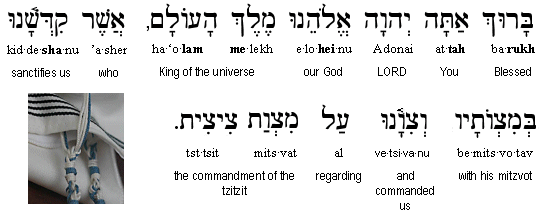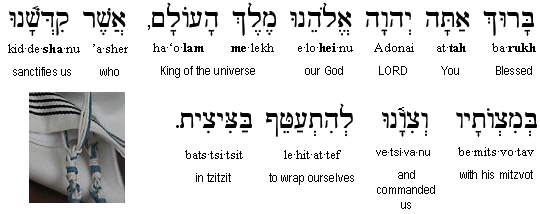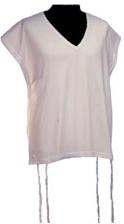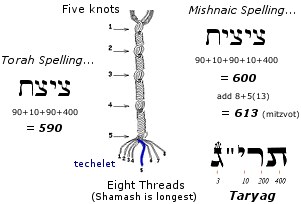|
|
|||||||||||||||||||||||
 |
|||||||||||||||||||||||
|
Learn Hebrew |
|||||||||||||||||||||||
 |
|||||||||||||||||||||||
|
Blessings Book |
|||||||||||||||||||||||
|
The Tallit Katan - |
||||||
|
Remembering God's Commandments... |
||||||
 |
||||||
|
Speak to the people of Israel, and tell them to make tassels on the corners of their garments throughout their generations, and to put a cord of blue on the tassel of each corner. And it shall be a tassel for you to look at and remember all the commandments of the LORD, to do them, not to "spy after" your own heart and your own eyes, |
|
|
|
The law of tzitzit required that the tassels were to be placed on the "four corners" of garments, but since most modern Jew's do not wear robes around, a special piece of clothing called the Tallit Katan (the little tallit) was developed to allow them to fulfill the commandment given in the Torah. The Tallit Katan is a piece of rectangular cloth (with a hole large enough for your head to go through) that has tzitzit (hanging threads) on each of the four corners. Traditional Jews wear it like a T-shirt under their clothing (but not directly next to their skin). Highly observant Jews will not take four steps without wearing the tzitzit because it is a mitzvah to wear it all the time. |
 |
||||||||
|
Blessed art Thou, LORD our God, King of the universe, who has sanctified us with his commandments and commanded us regarding the tzitzit. |
||||||||
|
Barukh attah Adonai, eloheinu melekh ha-olam, asher kiddeshanu bemitzvotav, |
||||||||
|
Next, put the tallit katan on and recite: |
||||||||
 |
||||||||
|
Blessed art Thou, LORD our God, King of the universe, who has sanctified us with his commandments and commanded us to wrap ourselves in the tzitzit. |
||||||||
|
Barukh attah Adonai, eloheinu melekh ha-olam, asher kiddeshanu bemitzvotav, |
||||||||
|
Tallit Gadol and Tallit Katan |
||||||||
|
||||||||
|
Tzitzit and 613 Commandments? |
||||||||
|
Rashi notes that the word tzitzit (ציצת) has the numerical value of 600 (in its Mishnaic spelling - which adds another Yod to the Torah's spelling) which, when combined with the five knots of eight threads yields a total of 613, the supposed number of the commandments (taryag mitzvot) listed in the Torah as enumerated by some of the Jewish sages: But what about the Hebrew value of the word (ציצת) that adds only to 590? Some of the sages have said that since the word לציצת appears once, and since Lamed (ל) equals 30, it "makes up for" the three times in the Torah when tzitzit is spelled without the Yod... The four corners (of the tallit) represent the four expressions of redemption from Egypt: "I will take you out; I will save you; I will redeem you; and I will take you as my own." |
|
|
|
|
Hebrew for Christians |
|||||
|
|||||

